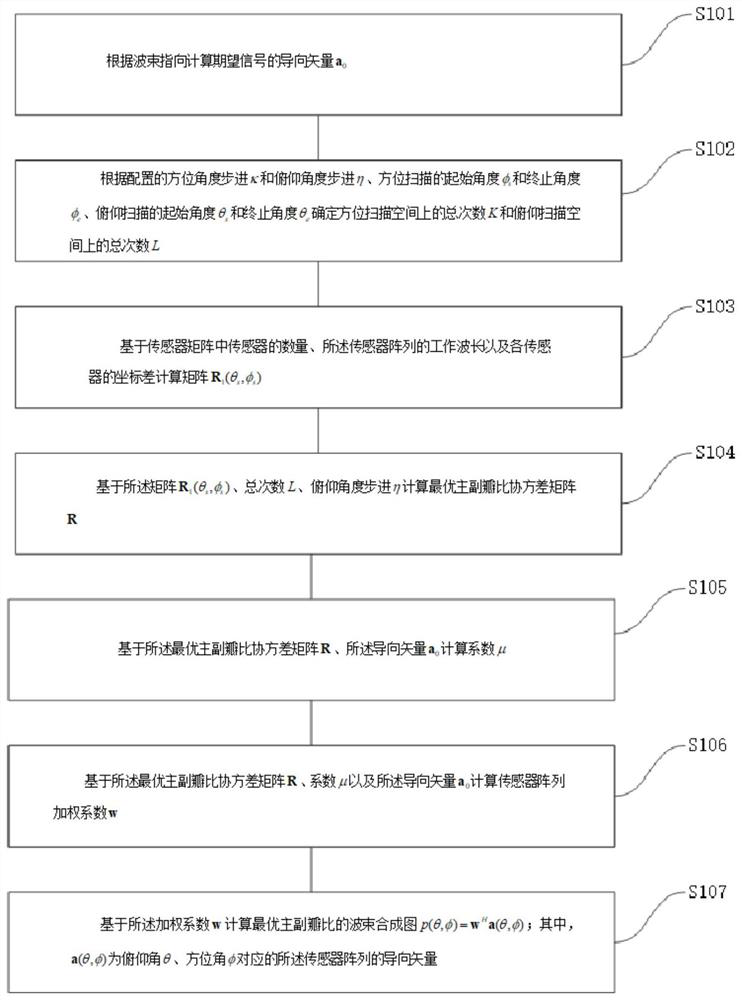Beam forming method and system for optimizing main and side lobe ratio
A technology of beamforming and main-sidelobe, which is applied in the field of communication, can solve problems such as low sidelobe levels, and achieve the effect of reducing computational complexity and improving efficiency
- Summary
- Abstract
- Description
- Claims
- Application Information
AI Technical Summary
Problems solved by technology
Method used
Image
Examples
Embodiment Construction
[0050] Specific embodiments of the present invention will be described in detail below in conjunction with the accompanying drawings. It should be understood that the specific embodiments described here are only used to illustrate and explain the present invention, and are not intended to limit the present invention.
[0051] figure 1 is a flow chart of a beamforming method for optimizing the main-sidelobe ratio provided by the present invention, such as figure 1 As shown, the beamforming method for optimizing the main-side lobe ratio includes:
[0052] S101, according to the incident azimuth angle φ of the desired signal 0 and pitch angle θ 0 Calculate the steering vector a of the desired signal 0 ;
[0053] S102, according to the configured azimuth angle step κ and pitch angle step η, the starting angle φ of the azimuth scan s and termination angle φ e , the starting angle θ of pitch scanning s and the termination angle θ e Determine the total number of times K on t...
PUM
 Login to View More
Login to View More Abstract
Description
Claims
Application Information
 Login to View More
Login to View More - R&D
- Intellectual Property
- Life Sciences
- Materials
- Tech Scout
- Unparalleled Data Quality
- Higher Quality Content
- 60% Fewer Hallucinations
Browse by: Latest US Patents, China's latest patents, Technical Efficacy Thesaurus, Application Domain, Technology Topic, Popular Technical Reports.
© 2025 PatSnap. All rights reserved.Legal|Privacy policy|Modern Slavery Act Transparency Statement|Sitemap|About US| Contact US: help@patsnap.com



